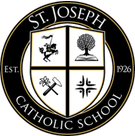Week at a Glance
September 9th - September 13th
ELA
- To practice letter- keyword- sound for consonants: l, h, k, v, w, y, x, z, qu
- To practice correct letter formation
- To practice sound recognition
- To understand that reading a book multiple times for different purposes helps readers better understand and enjoy the story
- To discuss that different readers enjoy different types of books
- Distinguish between what Thomas imagines and what is real in Thomas and the LIbrary Lady.
- Write a narrative retelling of Thomas and the Library Lady that shows how library books change life for Thomas.
- Develop vocabulary knowledge of the word imagination.
MATH
- Use counters to make sums of 6 and 7 in different ways.
- Use counters to make sums of 8 in different ways.
- Use counters to make sums of 9 in different ways.
- Use a ten-frame and counters to make sums of 10 in different ways.
- Identify missing parts of 10.
SCIENCE
- In this Read-Along lesson, Jada explores why her shadow changes over the course of a day at the beach. The lesson includes a short exercise where students act out the movement of shadows with their bodies. Students trace their shadows using colored chalk and track the shadow’s changes throughout the day.
SOCIAL STUDIES
- Identify students’ responsibilities to one another in the school community.
- Identify the benefits of four ways of cooperating in school.
- Explain what it means to play fairly and be a good sport.
RELIGION
- Tell that God is Father to all of us.
- Explain that we show love for one another in many ways.
- Identify the Bible as God’s message to us.
- Tell that God the Father sent his only Son, Jesus, to teach us how much God loves us.
- Define Bible, Jesus, Scripture, and Word of God.

